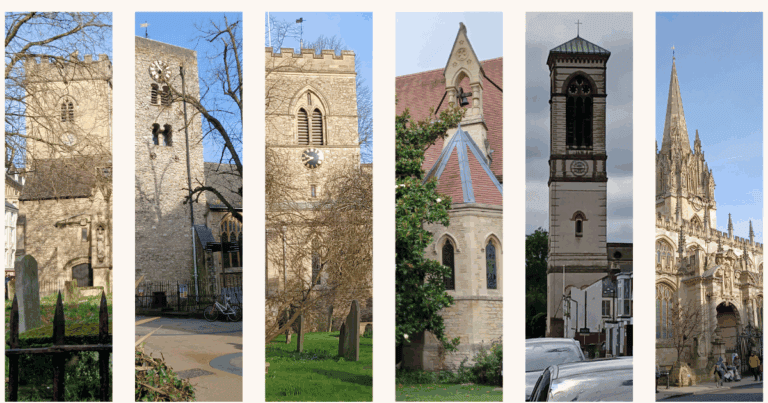
St Barnabas, and St Luke
Built in 1868-9 at the behest of Thomas Combe, Printer to the University and Anglo-Catholic, for the benefit especially of the workforce in the printing house at Oxford University Press. Built in 1868-9, with a campanile added a few years later, it was designed by Arthur Blomfield as an Italian Romanesque basilica with round arches, an apse, and a campanile. Coombes apparently stipulated that construction methods should be simple, and the walls are cement-rendered rubble with exterior decoration achieved with brick bands. The campanile in particular is a striking Jericho landmark: it can be seen clearly from the towpath on the west bank of the canal running up to Wolvercote (in Combe’s day, site of the Oxford Paper Mill).
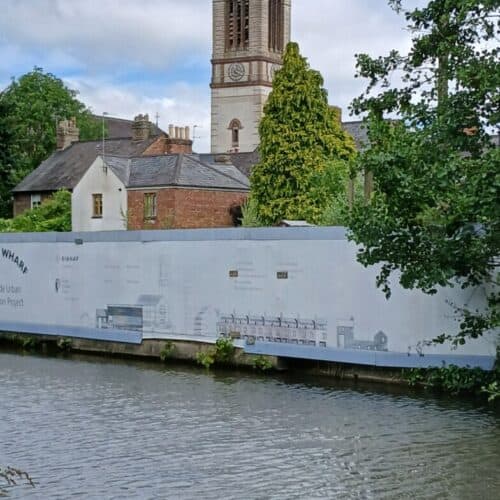
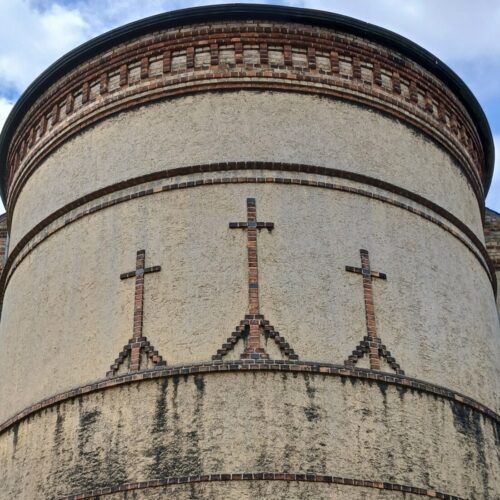

Inside, St Barnabas offers a rich profusion of colour and gilding. The decoration of the south wall, in particular, catches the eye, with lettering and figures from the Te Deum, and the furnishings are comparably rich.
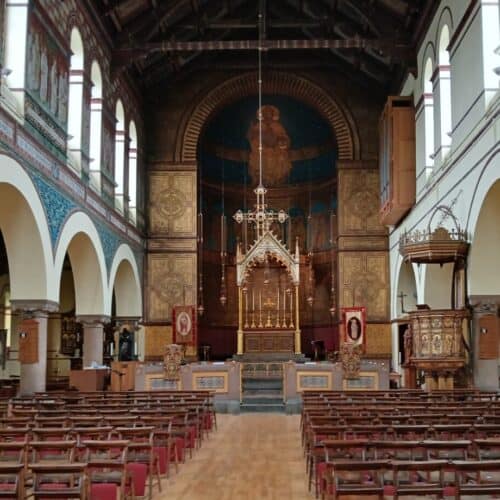
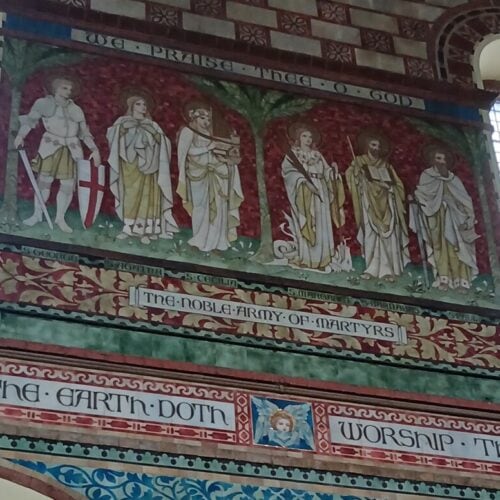
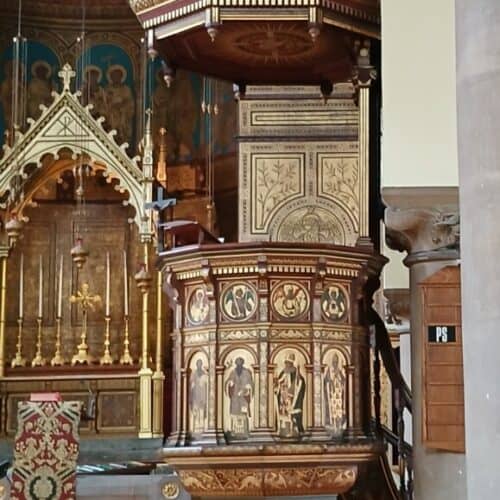
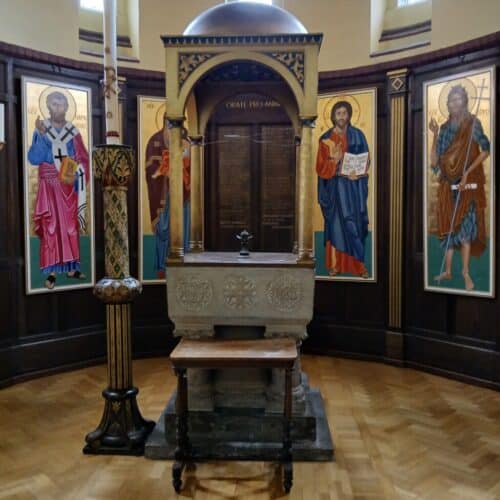
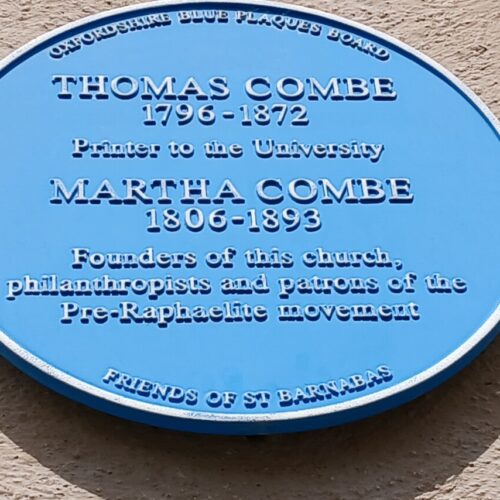 The whole church is a remarkable testament to the initiative and dedication of Thomas Combe, and the contribution made by him and his wife is acknowledged in a blue plaque on the exterior south wall of the church. As will be seen when walking back through the ROQ, Combe was interested in spiritual support for his workforce both in sickness and in health. In 1863-5 he presented the Radcliffe Infirmary with a chapel dedicated to St Luke, also designed by Arthur Blomfield, this time as a simple aisleless building with a steep gable, a rose window at the west end, and a tympanum over the south door showing Christ as the Good Shepherd.
The whole church is a remarkable testament to the initiative and dedication of Thomas Combe, and the contribution made by him and his wife is acknowledged in a blue plaque on the exterior south wall of the church. As will be seen when walking back through the ROQ, Combe was interested in spiritual support for his workforce both in sickness and in health. In 1863-5 he presented the Radcliffe Infirmary with a chapel dedicated to St Luke, also designed by Arthur Blomfield, this time as a simple aisleless building with a steep gable, a rose window at the west end, and a tympanum over the south door showing Christ as the Good Shepherd.
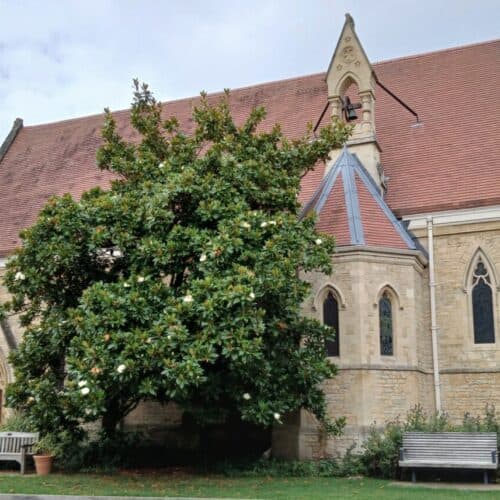
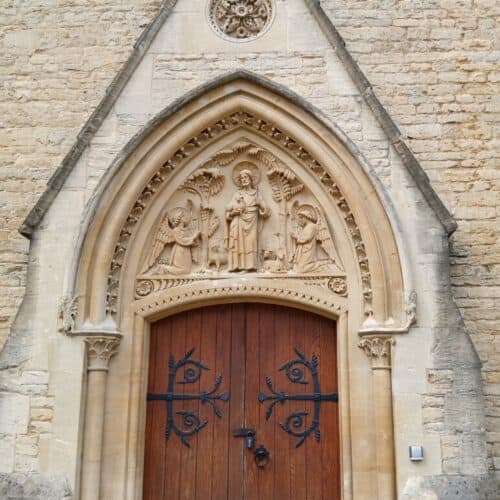
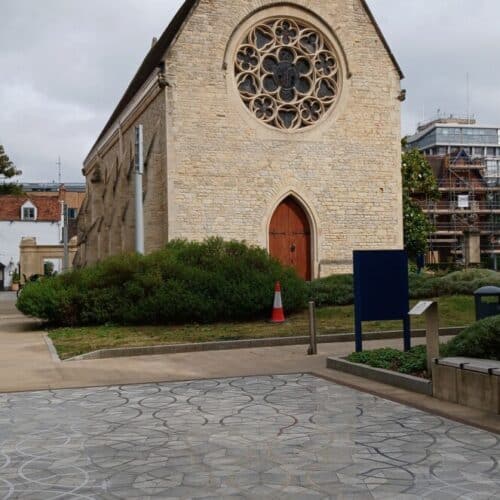
St Giles
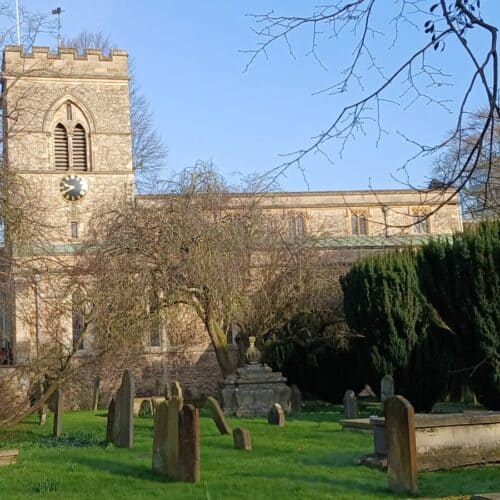
A medieval church (first mentioned in the 1120s), with a square tower (on an earlier base) finished in the early thirteenth century. The nave arcades with rounded piers are of the same date. Buildings of England calls attention to the ‘exceptional form’ of the north aisle, and notes that tree-ring dating has assigned a date of 1288 to the chancel roof. The church is set sideways on at the top of the wide thoroughfare named for it, and the path through the churchyard forms a link between the Banbury and Woodstock Roads.
St Mary Magdalen
Another medieval church of which the north aisle was rebuilt in 1841-2; according to BoE, it is known as ‘Martyrs’ Aisle’ because it was paid for from monies left over when the Martyrs’ Memorial just to the north of the church was put up. The south aisle, on the other hand, is still largely the work of the 1320s. The square west tower is early sixteenth century, as is the porch. Inside the furnishings include an 1894 reredos with painted figures of various saints, and from a much earlier period, and fourteenth-century font.

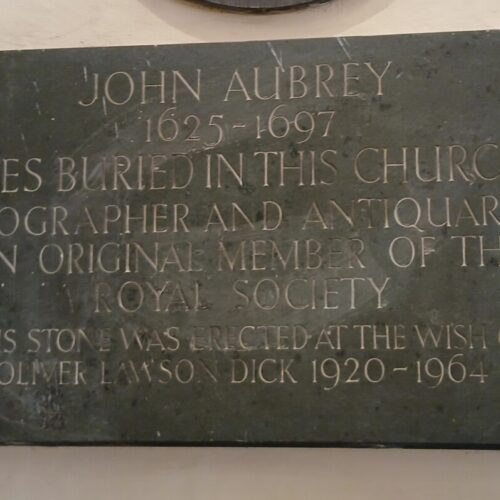
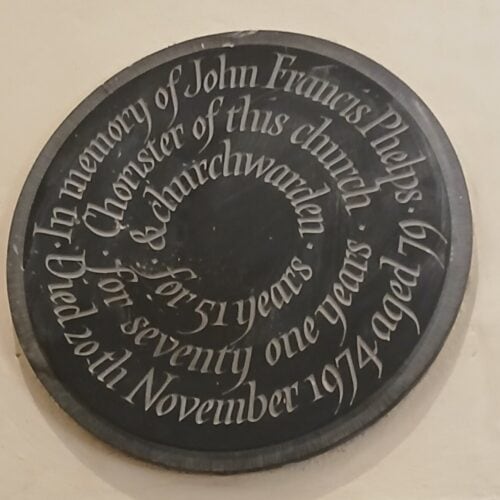

Modern memorial tablets include one to the antiquary and biographer John Aubrey (1626-97), who is buried in the churchyard. There is also a beautifully-lettered circular memorial to John Francis Phelps (d. 1974), ‘Chorister and Churchwarden for 51 years’.
St Michael at the Northgate
The west tower of St Michael’s Church is late Anglo-Saxon, and BoE suggests that it may originally have been built as a lookout; the church, at the junction of Cornmarket and Ship Street, is located just within what would have been the old city wall. The chancel is later, from the early thirteenth century, and the south and north aisles and the transept followed in the later medieval period. The church was restored by G. E. Street, who is responsible for the chancel arch, but BoE points out that following a fire in 1953, there was an ‘anti-Victorian’ restoration which resulted in pointed-arch ceilings. In short, St Michael at the Northgate is one of many churches in which you can hear conversation and debate on what a church requires going on across the centuries. It is always worth, too, looking out for survivals: the clear-glass east window of the chancel has four fine late- thirteenth-century glass panels showing respectively the figures of St Nicholas, St Edmund of Abingdon, the Virgin and Child, and St Michael.


Wall tablets include an elaborate seventeenth-century one to William Guise (d. 1783), and a modern plaque commemorating in Welsh and English the naturalist and philologist Edward Llwyd (1660-1709), Keeper of the Ashmolean between 1691 and 1709, said to be ‘buried here in the Welsh Aisle’. This usage apparently derives from the fact that when Jesus College was founded in 1571, it did not have its own chapel. Scholars were given permission to worship here in the south aisle, and from that it became known as the Welsh Aisle.
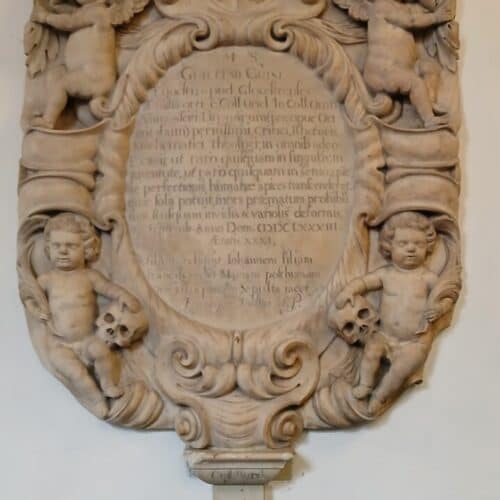

There is also in the south-west corner of the church a twentieth-century window, installed to commemorate the Burma Star Association, and carrying the Kohima Epitaph, ‘When you go home, tell them of us and say, For your tomorrow, we gave our today.’
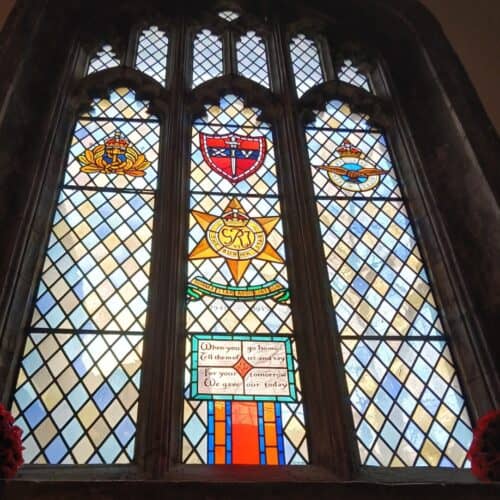
St Mary the Virgin
The church stands on the south side of Radcliffe Square, facing out into the High Street. Its late-thirteenth-century square west tower is topped by a fourteenth-century spire, which BoE calls ‘one of the most impressive in England’.
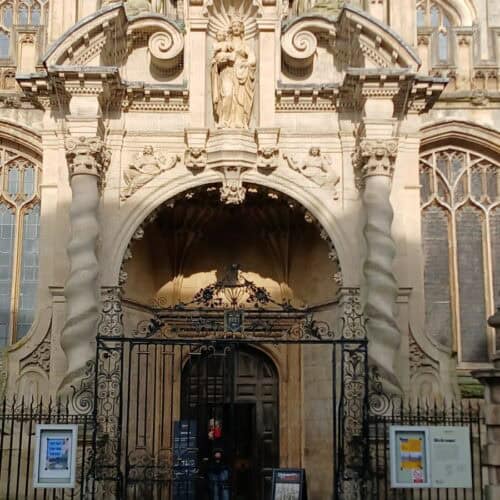
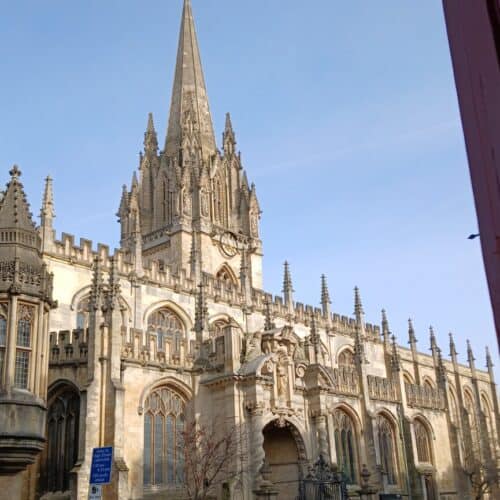
The fourteenth century also saw the construction, to the north-east of the building, of the old Congregation House, that is, a two-storey building to provide the University with its original meeting room for Congregation (the University’s governing body) and a chapel (downstairs), and above space for a library. St Mary’s is still known as the ‘University Church’.
From the High Street you enter by the south porch, given in 1637 by a former chaplain to Archbishop Laud. It is worth pausing to look at before you enter the church. The twisted columns at each side are a traditional visual reference to the temple of Solomon, and the shell-topped niche has a statue of the Virgin and Child.
The interior is spacious and high with tall slender piers, and there is a good deal to see; give yourself time to explore. Much of what is most striking, of course, comes from the medieval period, but there is a notable later addition: a wall tablet commemorating the Reformation Martyrs, both Catholic and Protestant.
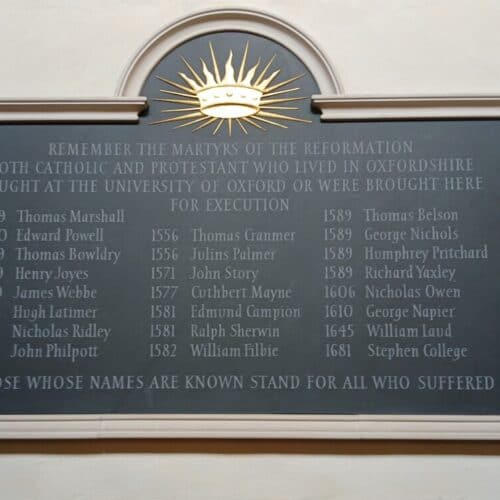

By Elizabeth Knowles
About the Author

Elizabeth Knowles is a renowned library researcher and historical lexicographer who devoted three decades of her career to Oxford University Press. Her time at OUP began with contributions to the OED Supplement and the New Shorter Oxford English Dictionary. Subsequently, she spearheaded the Quotations publishing program, solidifying her reputation as a leading expert in quotations and lexicography.
In 1999, Knowles assumed the prestigious role of Editor of the Oxford Dictionary of Quotations, a position she held continuously until her retirement from OUP in 2007. Under her editorial guidance, the eighth edition was published in 2014, marking a significant milestone in the dictionary’s history.
Knowles is a prolific writer and lecturer on the history of quotations and dictionaries. She has shared her extensive knowledge with both academic and general audiences, significantly enhancing our understanding of the role of quotations in language.
Beyond her work on the Oxford Dictionary of Quotations, Knowles is also the editor of “What They Didn’t Say: A Book of Misquotations” (2006) and “How To Read a Word” (2010). Her work continues to inspire and inform scholars, writers, and readers fascinated by the English language.
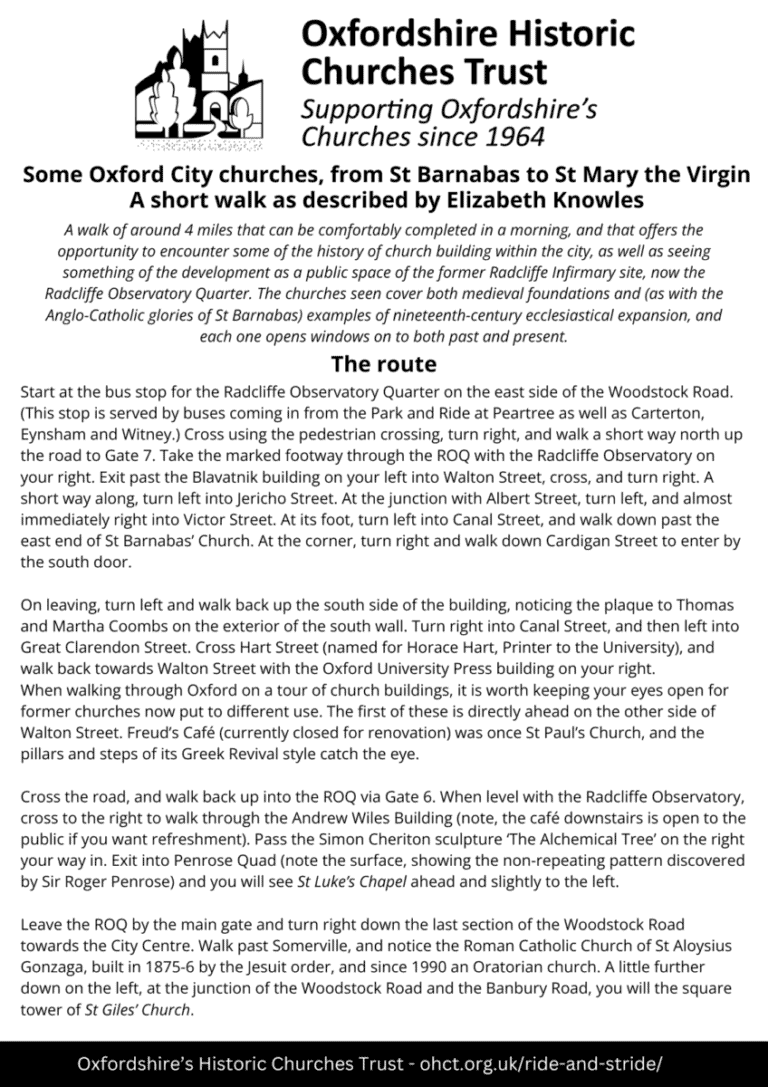
Churches visited on this route